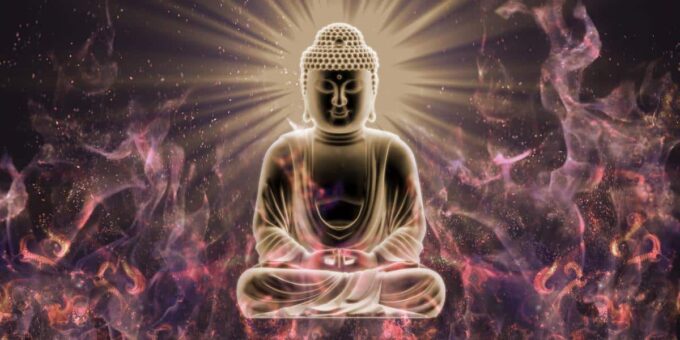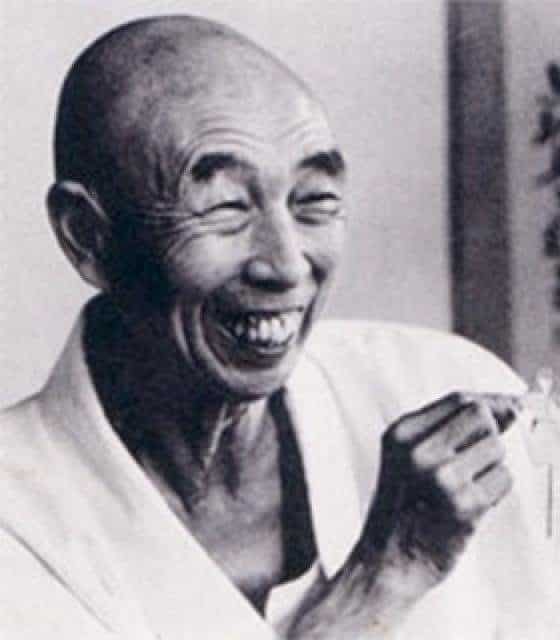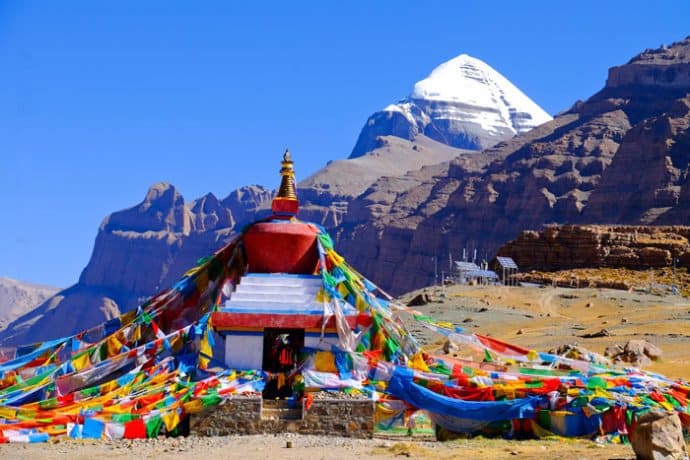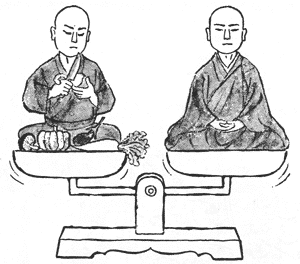Buddhism is a major religion which is followed by many people all over the world. The word Buddhism comes from ‘budhi’ which means ‘to awaken’. It originated thousands of years ago, when Siddhartha Gautama was enlightened. Though the religion is popular – is among the most-followed religions in the world, there are many misunderstandings that people have about Buddhism.
There are some misconceptions about Buddhism.
Laughing Buddha
The popular fat bald man (as depicted in statues) known as the Laughing Buddha is not a representation of Siddhartha Gautama. It is a Chinese monk known as Budai or Pu-tai, who was known for his generosity and joviality.
All Buddhists live in monasteries.
Since the past, many Buddhists have been laypeople and hence, have not lived in monasteries.
All Buddhists worship idols.
Some Buddhists worship idols, others do not. And there are some who do not worship idols, but pay respect to them.
All Buddhists are vegetarians.
Buddha was never against any type of meal. The earliest Buddhists scriptures suggest the historical Buddha himself was not a vegetarian. The first order of monks begged for their food, and the rule was that if a monk was given meat, he was required to eat it unless he knew that the animal was slaughtered specifically to feed the begging monks. Many Buddhists follow a vegetarian diet or have vegan food, but many others consume meat.
All Buddhists meditate and their meditation is arduous.
It is believed that meditation is the central practice of Buddhism. People imagine a Buddhist as someone meditating in a lotus position and chanting a mantra. The fact is that not all Buddhists meditate. Some Buddhist sects meditate for a long time while others practice it for a short time. While seated in chairs, they collectively chant the sutras (which are the teachings of Buddha).
All Buddhists are pacifists.
It is believed that a war has never been fought in the name of Buddhism. But there have been wars between Buddhists and non-Buddhists, and also among Buddhists. We can read about examples of violence happened in India, Sri Lanka, Myanmar, Japan or Thailand.
When Buddhists join their hands and bow their heads, they are praying for good fortune.
This gesture is not related to prayer. It is an expression of humility, gratefulness, or reverence.
Buddhism is a philosophy and not a religion.
People think that Buddhism is not a religion because it does not require belief in God. They think that religion requires belief in gods and supernatural beings. The fact is that Buddhism is a philosophy as well as a religion. Yes. It’s a philosophy. Yes. It’s a science of mind, if you use the word “science” in a very broad sense. Yes, it’s also a religion. Of course, a lot depends on how we define “religion.” Even though Buddhism does not require belief in God, most schools of Buddhism are highly mystical, which puts it outside the bounds of simple philosophy.
In Buddhism, karma means a fixed destiny or fate.
The word “karma” means “action,” not “fate.” Karma refers to the energy created by action, thoughts, speech, and deeds. The things we experience, good or bad, are determined by our thoughts and actions. We create karma and it affects us. It does not mean that our destiny has been fixed by what we did in our past life. It is something we make by our own choice.
Buddhists Believe in Reincarnation
If we define reincarnation as the transmigration of a soul into a new body after the old body dies, then no, the Buddha did not teach a doctrine of reincarnation. For one thing, he taught there was no soul to transmigrate. However, there is a Buddhist doctrine of rebirth. According to this doctrine, it is the energy or conditioning created by one life that is reborn into another, not a soul. Buddhists believe that after someone dies, a soul can never transmigrate into a new body. However, many Buddhists are agnostic on the matter of rebirth.
Buddhists believe that “life is suffering.”
This idea comes from a misreading of the First Noble Truth, often translated “Life is suffering.” People read that and think that Buddhism teaches that life is always miserable. In the earliest scriptures, Buddha said that life is dukkha. Dukkha is a Pali word that contains many meanings. It can mean ordinary suffering, but it can also refer to anything that is temporary, incomplete, or conditioned by other things. So even joy and bliss are dukkha, because they come and go. Some translators use “stressful” or “unsatisfactory” in place of “suffering” for dukkha.
Buddhism Teaches That Nothing Exists
Buddhism does not teach that nothing exists. It teaches that beings and phenomena have no intrinsic existence. But Buddhism does not teach there is no existence at all. The “nothing exists” folklore mostly comes from a misunderstanding of the teaching of anatta and its Mahayana extension, shunyata. But these are not doctrines of non-existence. Rather, they teach that we understand existence in a limited, one-sided way.
All Buddhists wear robes.
Some of the monks and priests who are strict followers of Buddha wear robes, but not all.
Siddhartha Gautama, also known as Buddha, is a God.
There is no God or deity in the religion. Also, Buddha never claimed that he was God or taught that there were no gods, but said that it was not necessary to believe in God to attain enlightenment. The historical Buddha is considered to have been a human being who realized enlightenment through his own efforts. “Buddha” also represents enlightenment itself and also Buddha-nature — the essential nature of all beings. The iconic image of the Buddha and other enlightened beings are objects of devotion and reverence, but not as gods.
The Dalai Lama is the head of Buddhism.
The people of Tibet consider Dalai Lama as their political leader. He also has the authority within the sects of Tibetan Buddhism. However, he is not the head of any of the sects of Buddhism.
Buddhism Teaches We’re All One
In the Mahanidana Sutta, the Buddha taught that it was incorrect to say that the self is finite, but it is also incorrect to say that the self is infinite. In this sutra, the Buddha taught us not to hold on to views about whether the self is this or that. We fall into the idea that we individuals are component parts of a One Thing, or that our individual self is false and only an infinite self-that-is-everything is true. Understanding the Self, requires going beyond concepts and ideas.
Buddhism is a reformation of Hinduism.
Not a Reformation: Buddhism is different from Hinduism. In Hinduism, there are transmigrating souls, caste system, polytheism, and animal sacrifice. Buddhism does not follow these principles.
Enlightenment Is Being Blissed Out All the Time
People imagine that “getting enlightened” is like flipping a happy switch, and that one goes from being ignorant and miserable to being blissful and serene in one moment. The Sanskrit word often translated as “enlightenment” actually means “awakening.” Most people awaken gradually, often imperceptibly, over a long period of time. Or they awaken through a series of “opening” experiences, each one revealing just a little more, but not the whole picture. Even the most awakened teachers are not floating around in a cloud of bliss. They still live in the world, ride on buses, catch cold, and sometimes have a job.
Buddhists Avoid Attachments, So They Can’t Have Relationships
When people hear that Buddhist practice “non-attachment” they sometimes assume it means Buddhists can’t form relationships with people. But that’s not what it means. At the basis of attachment is a self-other dichotomy — a self to attach, and an other to attach to. But Buddhism teaches the self-other dichotomy is an illusion, and that ultimately nothing is separate. When one intimately realizes this, there is no need for attachment. But that doesn’t mean Buddhists cannot be in close and loving relationships.
That Absolutely Everything is Impermanent
Buddha set off on his spiritual quest to find a way to escape impermanence – to find a way out of old age, sickness, and death. But it’s not really true that absolutely everything is impermanent. More correctly, it should be “All conditioned things are impermanent” because, in this context, the word “dhamma” only refers to conditioned things – things which are born and die, things which are created and destroyed. It does NOT refer to the unconditioned – things that are not created.
photo credit: pinterest




